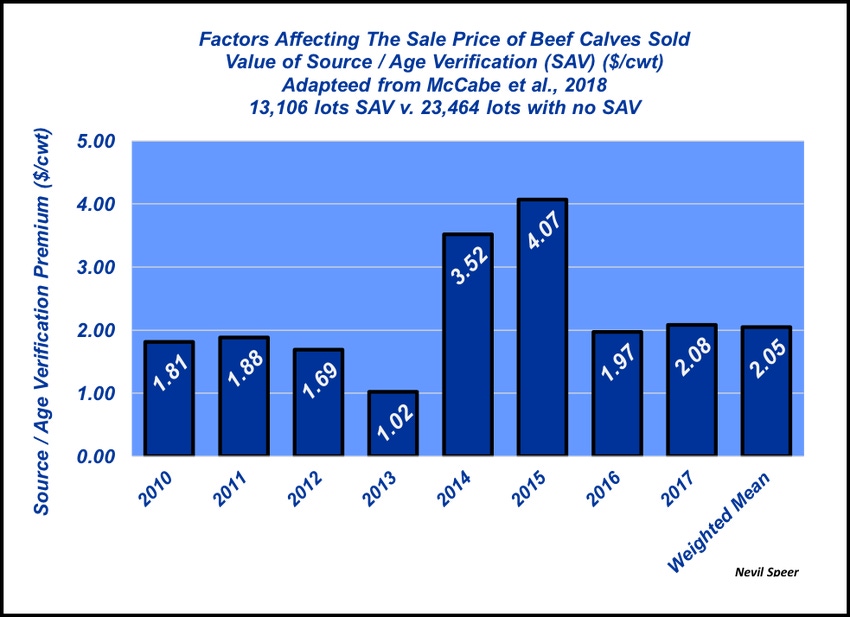Is there value in source and age verification?
Data from Superior Livestock show that source and age verification brings extra dollars at sale time.
September 8, 2018

In prior weeks, we’ve focused on the key drivers surrounding the feeder cattle market in this column. Those are important factors for producers to understand at the front end of the fall run.
The first part of the series highlighted the price spread between feeder cattle and the deferred fed market since 2016. Meanwhile, the second part of this discussion provided an overview of the relative value of fundamental attributes such as sex, region and breed. And third, coverage highlighted the importance of management – most notably, weaning and vaccination are rewarded in the market place – with special emphasis on the importance of calves being weaned prior to shipment.
To further underscore the importance of management, this week’s graph highlights the relative value of source and age verification over time, based on eight years of sales through Superior Livestock. As a reminder, source and age verification enables cattle to be eligible for a variety of programs and/or specific export markets that require such verification.

The eight-year time frame provides for a large data set; the analysis covers 36,570 lots. The average annual premiums have ranged from $1.02 per cwt (2013) to $4.0 per /cwt (2015).
More importantly, though, the weighted mean over eight years is equivalent to $2.05 per cwt. In other words, over time, a seller could expect to receive about $13.50 per head for a load of 650-pound calves – that’s a meaningful premium equivalent to about $1000 per load.
Tangible efforts to provide documentation to go along with the cattle can provide significant dividends – and further underscore of the importance of management inputs prior to sale. What plans are you making to add value from a management standpoint? How are you looking to price your cattle? How does this data fit your expectations as you enter into the fall marketing season? Leave your thoughts in the comments section below.
Nevil Speer serves as an industry consultant and is based in Bowling Green, KY. Contact him at [email protected].
About the Author(s)
You May Also Like





